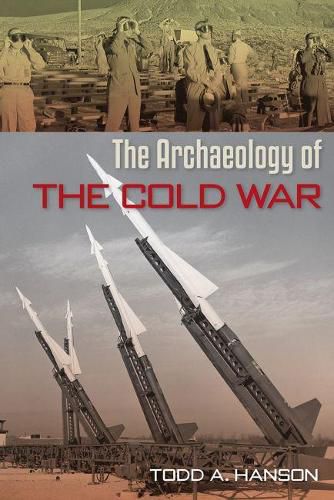Readings Newsletter
Become a Readings Member to make your shopping experience even easier.
Sign in or sign up for free!
You’re not far away from qualifying for FREE standard shipping within Australia
You’ve qualified for FREE standard shipping within Australia
The cart is loading…






This title is printed to order. This book may have been self-published. If so, we cannot guarantee the quality of the content. In the main most books will have gone through the editing process however some may not. We therefore suggest that you be aware of this before ordering this book. If in doubt check either the author or publisher’s details as we are unable to accept any returns unless they are faulty. Please contact us if you have any questions.
The Cold War was one of the twentieth century’s defining events, with long-lasting political, social, and material implications. It created a global landscape of culturally and politically significant artifacts and sites that are critical to understanding and preserving the history of that conflict. The stories of these artifacts and sites remain mostly untold, however, because so many of the facilities operated in secret.
In this volume, Todd Hanson examines the Cold War’s secret sites through three theoretical frameworks: conflict archaeology, the archaeology of the recent past, and the archaeology of science. He presents case studies of investigations conducted at some famous-and some not so famous-historic sites that were pivotal to the conflict, including Bikini Atoll, the Nevada Test Site, and the Cuban sites of the Soviet Missile Crisis. Hanson illustrates how, by examining nuclear weapons testing sites, missile silos, peace camps, fallout shelters, and more, archaeology can help strip away the Cold War’s myths, secrets, and political rhetoric in order to better understand the conflict’s formative role in the making of the contemporary American landscape. Addressing modern ramifications of the Cold War, Hanson also looks at the preservation of atomic heritage sites, the phenomenon of atomic tourism, and the struggles of America’s atomic veterans.
As the Cold War retreats into the annals of history, and its monuments fade away, so too do the opportunities to gain deeper insight into the successes–and the failures–of the era. Hanson suggests topics for future archaeological research and reflects on the implications of failing to study or preserve North America’s Cold War heritage.
A volume in the series the American Experience in Archaeological Perspective, edited by Michael S. Nassaney
$9.00 standard shipping within Australia
FREE standard shipping within Australia for orders over $100.00
Express & International shipping calculated at checkout
This title is printed to order. This book may have been self-published. If so, we cannot guarantee the quality of the content. In the main most books will have gone through the editing process however some may not. We therefore suggest that you be aware of this before ordering this book. If in doubt check either the author or publisher’s details as we are unable to accept any returns unless they are faulty. Please contact us if you have any questions.
The Cold War was one of the twentieth century’s defining events, with long-lasting political, social, and material implications. It created a global landscape of culturally and politically significant artifacts and sites that are critical to understanding and preserving the history of that conflict. The stories of these artifacts and sites remain mostly untold, however, because so many of the facilities operated in secret.
In this volume, Todd Hanson examines the Cold War’s secret sites through three theoretical frameworks: conflict archaeology, the archaeology of the recent past, and the archaeology of science. He presents case studies of investigations conducted at some famous-and some not so famous-historic sites that were pivotal to the conflict, including Bikini Atoll, the Nevada Test Site, and the Cuban sites of the Soviet Missile Crisis. Hanson illustrates how, by examining nuclear weapons testing sites, missile silos, peace camps, fallout shelters, and more, archaeology can help strip away the Cold War’s myths, secrets, and political rhetoric in order to better understand the conflict’s formative role in the making of the contemporary American landscape. Addressing modern ramifications of the Cold War, Hanson also looks at the preservation of atomic heritage sites, the phenomenon of atomic tourism, and the struggles of America’s atomic veterans.
As the Cold War retreats into the annals of history, and its monuments fade away, so too do the opportunities to gain deeper insight into the successes–and the failures–of the era. Hanson suggests topics for future archaeological research and reflects on the implications of failing to study or preserve North America’s Cold War heritage.
A volume in the series the American Experience in Archaeological Perspective, edited by Michael S. Nassaney